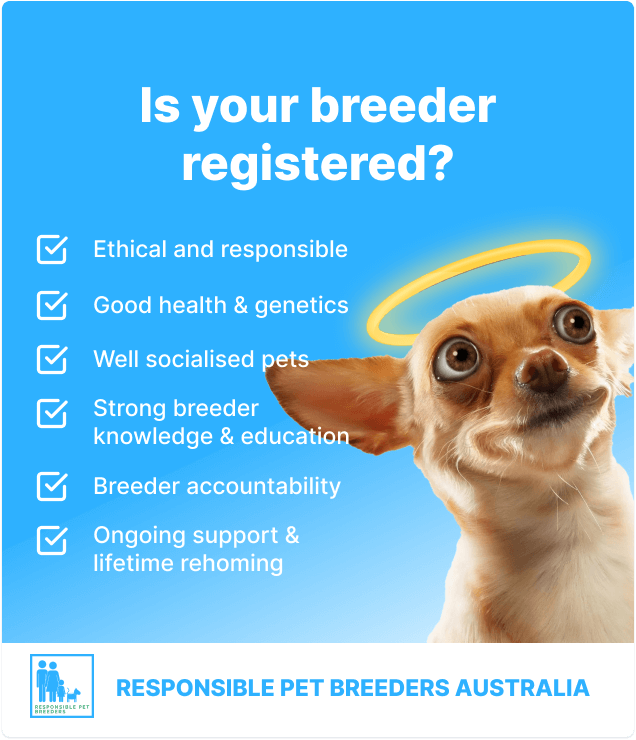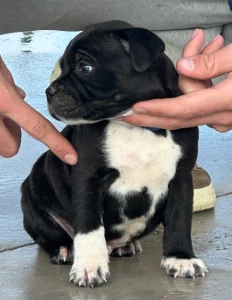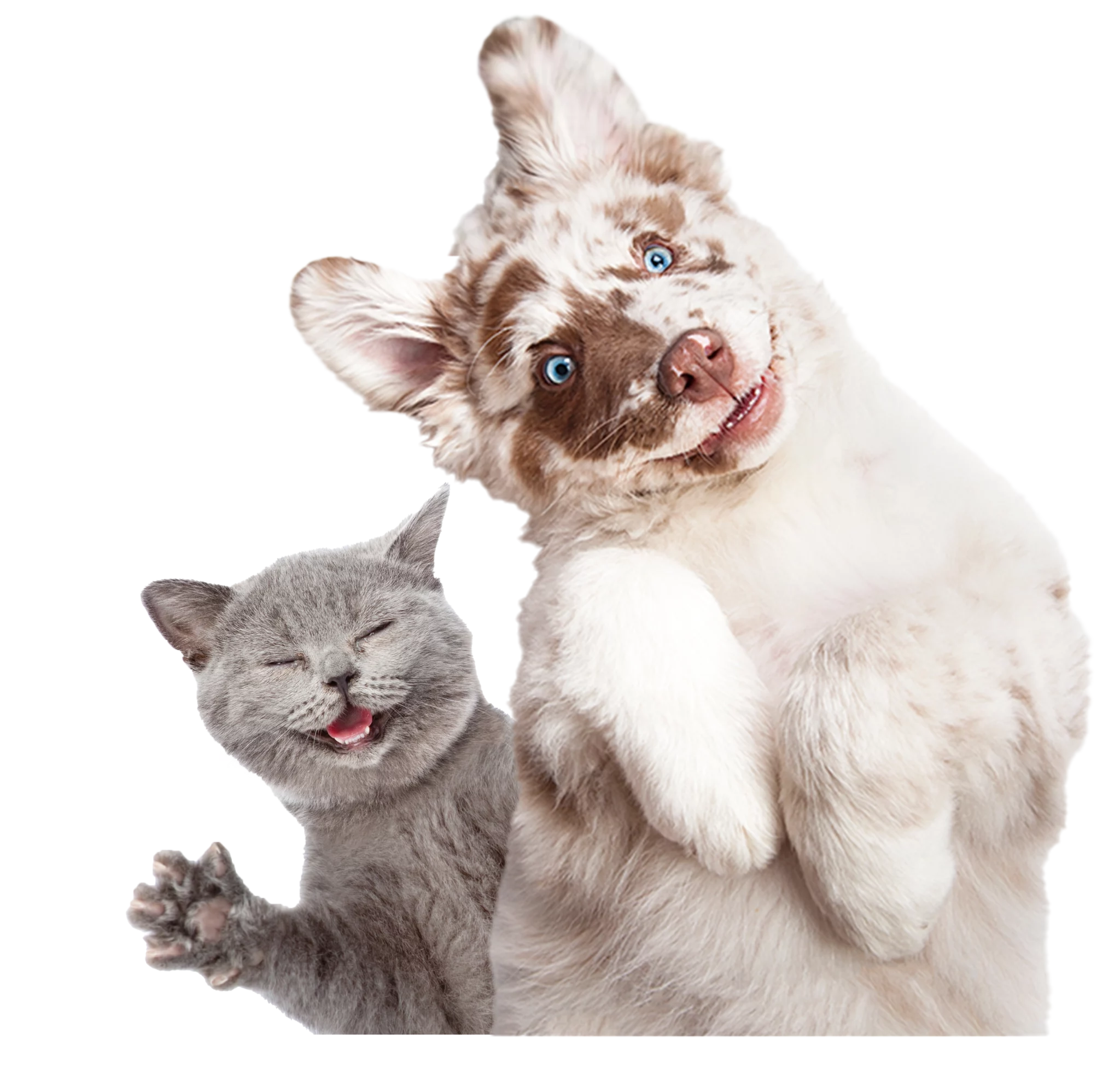Search over 7 Horse results across Australia
Horses are social animals that form close bonds with other horses and with their human handlers. They are strong and graceful, with a temperament that can be both gentle and wild. They are also very curious and love to investigate their surroundings.

Filter 
Search
Breed
Location
Price Range
Breed Characteristics
Grooming
Coming soon.
Exercise
Coming soon.
Size Range
Coming soon.
Find Horses
For Sale
7 Items Found
Australia's No. 1 Free Pets Classified
Horses are social animals that form close bonds with other horses and with their human handlers. They are strong and graceful, with a temperament that can be both gentle and wild. They are also very curious and love to investigate their surroundings.
 Questions To Ask A Breeder
Questions To Ask A Breeder
- Are you are registered breeder?
- Can we meet in person?
- Have they been socialised?

Breed Characteristics
Grooming
Coming soon.
Exercise
Coming soon.
Size Range
Coming soon.
The Ultimate Horse Guide
About Horse
Horses are beautiful, noble creatures that have been revered by humans for centuries. They are also intelligent creatures that are capable of learning complex tasks and responding to subtle cues from their handlers. Horses are also very intelligent animals, able to learn complex tasks and tricks with the proper training.
Lifespan
25 to 30 years
Weight
400 to 800 kg
Height
L: 4 hands (142 cm) to 17 hands (173 cm) at the withers
Grooming
Sorrel, Bay, Palomino, Dun, Dapple Grey, Buckskin, Roan, Paint, Appaloosa, Grey, Chestnut and Black
Origins
A horse is a hoofed mammal of the family Equidae. The horse has evolved over the past 45 to 55 million years from a small multi-toed creature, Eohippus, into the large, single-toed animal of today. Horses are herbivores with a digestive system that allows them to thrive on a diet of grasses and other plant material, generally found in pastures.
The modern horse is used for leisure activities such as riding, racing, and dressage; as well as for practical uses such as ploughing and hauling. They are also used in therapeutic programs involving interaction with disabled humans. Although most horses today are domesticated, some remain feral, or wild.
Some horses have been selectively bred to perform certain tasks better than others. For example, ponies were bred to be smaller so they could be used by children and people of smaller stature; draft horses were bred to be larger and stronger so they could be used for pulling heavy loads; Arabian horses were bred for speed and endurance; while Quarter Horses were bred specifically for cow work and sprinting short distances. There are also now many different crosses between these different breeds that have been developed to combine desired characteristics from each parent breed.
Generally, there are three types of horse: light horse breeds that are used for riding; draft horse breeds that are taller and heavier, used for pulling loads; and pony breeds, which are smaller than both light and draft horses. Most light horse breeds descend from the Arabian Horse while most draft horse breeds descend from the North African Barb Horse.
There are more than 300 breeds of horses in the world today, developed for many different uses.
Key Characteristics Of Horses
Are Horses Family-Friendly?
Horses make great pets, but they require a lot of attention and care. Horses need to be trained in order to be safe and manageable for humans. Training can range from basic ground manners such as leading and loading into a trailer, to more advanced dressage or jumping movements. It is important that horses receive consistent training in order to avoid confusion and frustration.
Common Health Issues & Considerations
Horses may suffer from:
Colic
Laminitis
Respiratory infections
Nature / Temperament
Suitable Environment
A horse should have a box stall that is at least 12 x 12 feet. The stall should have a smooth, level floor and be clean and dry. It should be well-ventilated and have plenty of light. The walls and ceiling should be solid so the horse cannot see out and become agitated. There should be a hayrack or manger in the stall for the horse to eat from, and a water bucket that is refilled daily. The stall should be cleaned out every day, and the bedding should be fresh.
Horses are grazing animals and need access to pasture or hay at all times. If they are not able to graze, they need to have hay available at all times. The amount of pasture or hay a horse needs depends on the size of the horse, the type of horse, and the weather.
In general, a horse needs about 2–3% of their body weight in forage per day. For example, a 1000 lb horse would need 20-30 lbs of forage per day. Horses also need access to fresh water at all times.
The type of pasture or hay is also important. horses should not have access to high-sugar grasses or legumes such as alfalfa as these can cause digestive problems. The best type of pasture or hay for horses is a mix of grasses such as Timothy, Orchard and Bermuda.
Other Considerations
- Horses require regular vaccinations to protect against diseases such as influenza and tetanus.
- Horses tend to handle cold weather better than hot weather. Provide your horse with plenty of clean drinking water and access to share during hotter months.
- One of the most important things to remember before buying a horse is that they are living creatures with their own individual personalities and needs. Take the time to get to know your horse and build up a bond of trust between you.
How can I take good care of my Horse?
Nutrition
A horse’s nutritional needs change throughout its lifetime, from a rapidly growing foal to a mature adult. Proper nutrition is essential at every stage to ensure optimal health and performance.
The basics of good nutrition for horses are similar to those for other animals: a balance of carbohydrates, proteins, fats, vitamins, minerals, and water. However, horses have some unique characteristics that require special consideration when it comes to their diet. For example, their digestive system is designed to extract nutrients from plants – specifically, grasses and other forage. This means that they are less efficient at digesting grain than other animals, and too much grain can actually be harmful. In addition, horses are very sensitive to changes in their diet and can easily become ill if their food is not consistent.
It is important to work with a veterinarian or equine nutritionist to develop a custom diet plan for your horse, based on its age, activity level, and any health concerns. Here are some general guidelines for feeding horses:
Forage should make up the majority of a horse’s diet – at least 60% by weight. Good quality hay or pasture is the best source of nutrition for horses. It is important to choose a hay that is appropriate for your horse’s age and activity level – for example, a growing foal or an active racehorse will need a higher-protein hay than a sedentary adult.
Grain should only be fed in small amounts – no more than 10% of the total diet by weight. Grain should be introduced gradually into a horse’s diet to avoid digestive problems. Only feed high-quality grain products that are specifically designed for horses; do not give them table scraps or other human food.
Fats can be a useful source of energy for horses, but should only make up 2-5% of the total diet. Fat supplements such as vegetable oil can be added to the diet if needed.
Vitamins and minerals are essential for proper growth and development, and many are needed in very specific amounts. A good quality commercial feed will provide most of the vitamins and minerals your horse needs, but your veterinarian may recommend additional supplements if necessary. Horses also need access to fresh water at all times; they should drink about 10-12 gallons per day on average.
Feeding schedules will vary depending on the type of horse and its individual needs. For example, growing foals may need to be fed several times per day, while adult horses can usually get by with just one or two meals. It is important to maintain a consistent feeding schedule so that your horse’s digestive system can adjust accordingly.
Horses are unique creatures that require special consideration when it comes to their diet. By working with a veterinarian or equine nutritionist, you can develop a custom feeding plan that meets all of your horse’s nutritional needs throughout its lifetime.
Grooming
Horses require more grooming than other domesticated animals because their coats collect dust, debris and tangles easily due to their size and position relative to the ground. A daily brushing helps remove dirt, loose hair and sweat from the coat; while weekly baths using soap or shampoo help keep the skin clean and healthy underneath all that hair! In addition to daily or weekly grooming sessions, horses also need their hooves trimmed every 4-6 weeks by a professional farrier (someone who specialises in taking care of horses’ feet).
This is general information and should not be relied on for adopting or purchasing advice.
Recommended Grooming Tips
Exercise
Exercise is important for keeping horses healthy both mentally and physically. A lack of exercise can lead to boredom which can cause mischievous or even dangerous behaviours such as kicking at stall walls or biting other horses nearby; while too much exercise without proper warm up can lead to injuries such as strains or pulled muscles.
Horses should be exercised gradually at first until they build up stamina and muscle tone; then they can be worked harder during future sessions. Common exercises used with horses include lunging (leading them around in circles while they walk/trot/canter), trail riding (riding along paths through forests or fields), arena work (riding around an enclosed area performing various manoeuvres) and jumping (riding over obstacles).
Riding
One of the most important things to remember when training a horse to be rideable is to start slow and gradually increase the intensity of the training sessions. If a horse is asked to do too much too soon, they may become overwhelmed and discouraged, which will make it harder to train them in the future. It is also important to be patient with the horse and not get frustrated if they don’t seem to be progressing as quickly as you would like. Every horse learns at their own pace, so it is important to go at the horse’s speed rather than your own.
When first starting out, it is often helpful to lunge the horse before trying to ride them. This gives the horse a chance to get used to having someone on their back and helps them learn how to respond to basic commands such as “walk,” “trot” and “stop.” Once the horse is comfortable being lunged, you can begin working on mounting and riding them. Start by having someone hold the horse while you mount, and then slowly release the horse’s head once you are settled in the saddle. It is important to make sure that the horse feels comfortable and safe at all times during the training process, as this will help them trust you and make it more likely that they will want to cooperate during future sessions.
Most Asked Horse Questions
There are many ways to keep a horse entertained. One way is to give the horse a job to do such as pulling a cart or carrying a rider. Other ways include providing the horse with toys to play with, letting the horse graze in a pasture, and providing the horse with opportunities to socialise with other horses.
There are a few ways to tell if your horse is healthy. First, check their eyes. They should be bright and clear, with no discharge. Second, check their coat. It should be shiny and free of any bumps or scabs. Third, check their manure. It should be firm and free of any parasites. Finally, check their overall energy level and attitude. A healthy horse will be alert and responsive, with a healthy appetite.
If you are searching for a horse for sale, it’s important to only deal with reputable breeders. Horses can be surprisingly fragile creatures and need the best care from an early age. Horses kept as pets can cost between $500 to $5000, but for racing horses or working horses there is almost no upper limit, depending on the horse’s pedigree, performance record and temperament.
Similar Breeds
Safe
Responsible
Accountable
Find your next pet with PetsForHomes - Australia’s number one free website to find a pet for sale or adoption.
Trusted & Viewed by over 1 Million Australians






